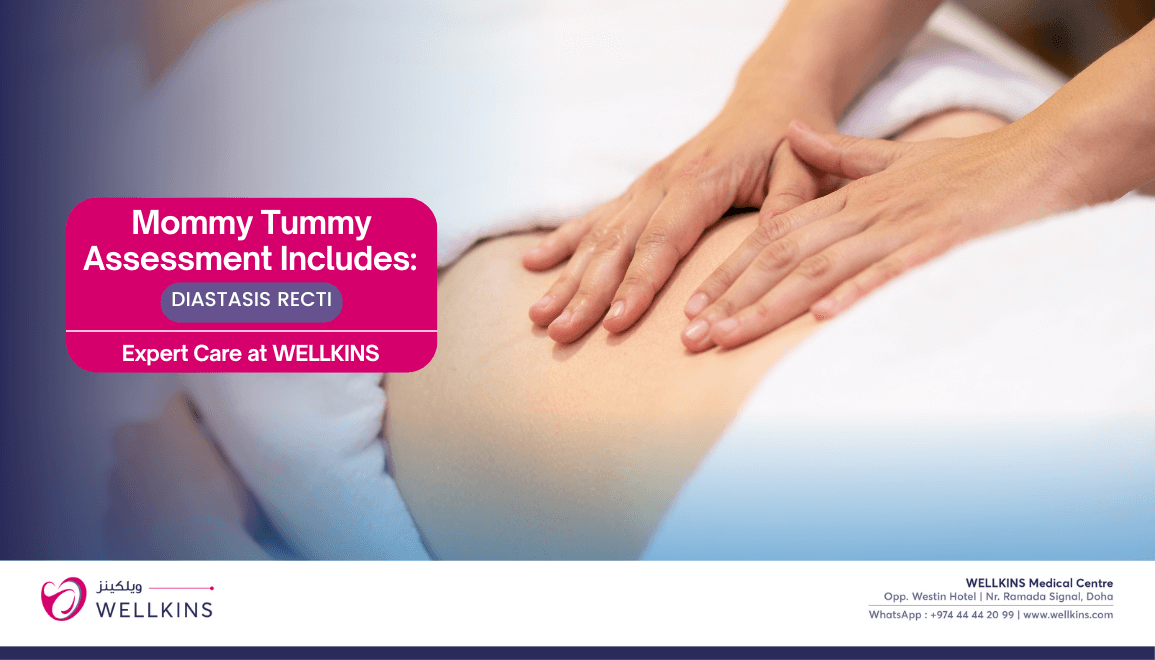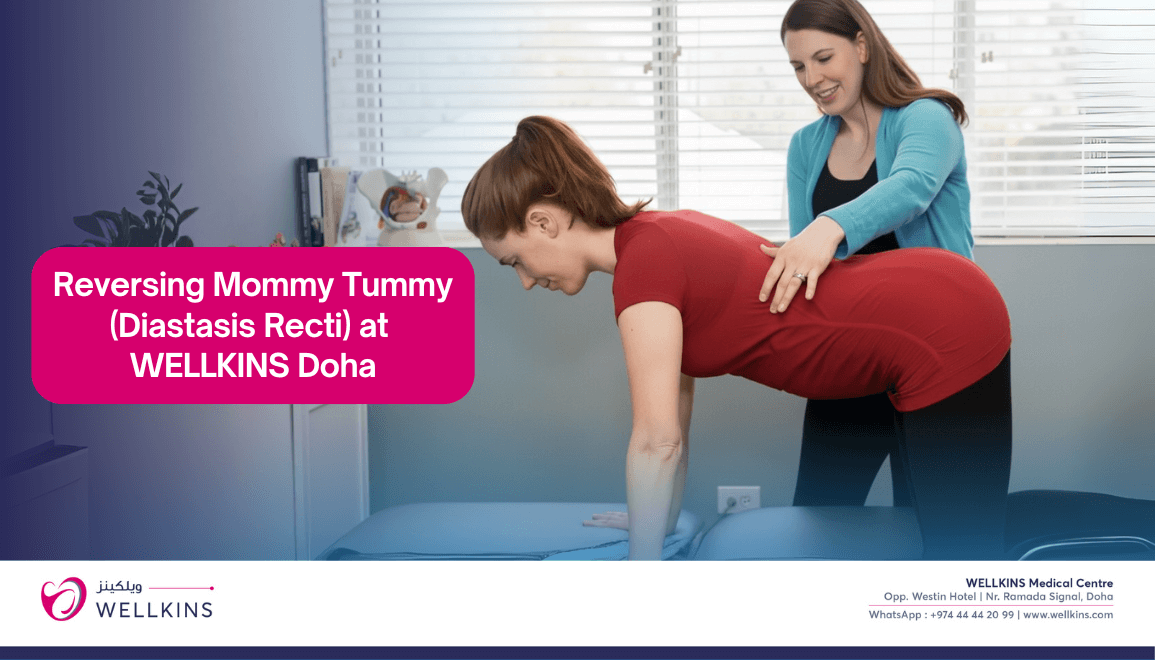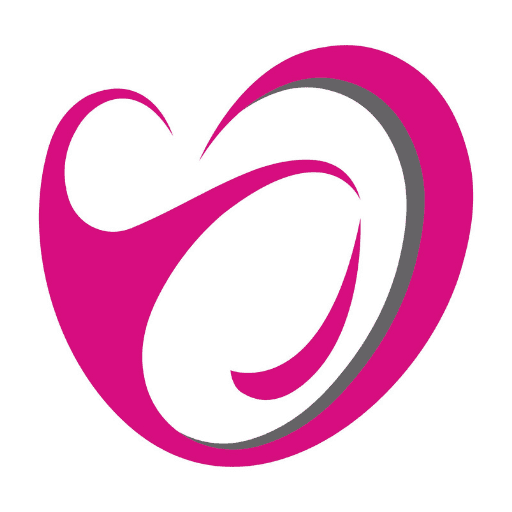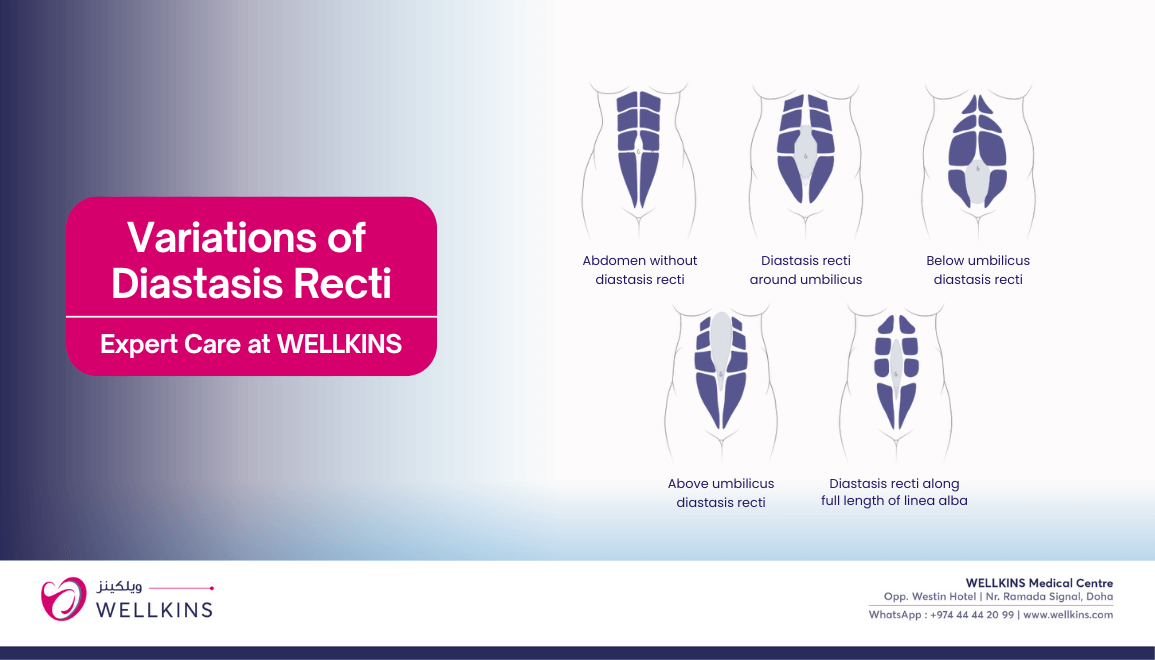Author: Hadel Shanan Physiotherapist Wellkins Medical Centre
Do you ever feel a persistent weakness, a lack of power, or even a bulging sensation in your core area, particularly after pregnancy or strenuous activity? This uncomfortable and often concerning feeling can frequently be related to a common yet often misunderstood condition called Rectus Diastasis (Diastasis Recti Abdominis, or DRA). At Wellkins Medical Centre in Doha, Qatar, we recognize that DRA is far more than just a cosmetic concern it’s a significant core dysfunction that profoundly impacts your overall stability, strength, and pelvic health, affecting daily function and quality of life. Understanding this condition is the first step towards effective recovery and renewed confidence in your body.
“A journey of a thousand miles begins with a single step, and for healing Diastasis Recti (DR), that step is often targeted physiotherapy. This separation of the abdominal muscles, common after pregnancy, shouldn’t define your strength. In Qatar, specialized women’s health physiotherapy provides the expert guidance you need to reconnect with your core. A structured rehabilitation plan focuses not just on closing the gap, but on restoring deep core function, improving posture, and building functional strength. This is the pathway to a strong, stable body and a confident return to a full and active life.”
Understanding Rectus Diastasis: The Core Separation
Rectus Diastasis is specifically defined as the separation of the rectus abdominis muscles commonly known as the “six-pack” muscles along the Linea alba, which is the strong but flexible connective tissue that runs down the middle of the abdomen. This widening creates a gap, compromising the structural integrity of the entire abdominal wall.
While it is most notably prevalent in women during and after pregnancy due to the immense abdominal expansion, hormonal changes that soften connective tissue, and increased intra-abdominal pressure from the growing uterus, it can affect others too. Men and women with central obesity, chronic heavy coughing, intense abdominal straining, or those who have undergone previous abdominal surgery may also develop DRA, indicating that it’s a condition related to excessive or prolonged pressure on the abdominal fascia.
While not always immediately painful, uncorrected DRA can lead to a cascade of insidious physical issues, including a noticeable and persistent core weakness, nagging low back pain, significant and compensatory postural changes, and poor functional movement during everyday tasks. This complex interplay of symptoms firmly establishes specialized physiotherapy as the most effective and often indispensable approach for complete recovery and long-term well-being.
How Rectus Diastasis Develops
The development of DRA is fundamentally a mechanical process that progressively compromises the delicate integrity of your core canister, often over an extended period:
Progressive Stretching of the Linea Alba: During events like pregnancy or excessive internal pressure (e.g., from improper heavy lifting or chronic straining), the Linea alba, which is designed to be taut, gradually stretches and thins. This mechanical stretching reduces the crucial tension and foundational stability of the entire core structure, akin to a tent losing the tension in its central guy rope.
Compromised Spinal and Pelvic Stabilization: As the Linea alba loses its integrity, the abdominal wall is no longer able to effectively stabilize the lumbar spine and pelvis. This forces other muscles, like the back extensors, to compensate, leading to muscle imbalances and increased strain on the skeletal system, which often manifests as pain or discomfort.
Ineffective Pressure Management: With a compromised abdominal wall, the significant intra abdominal pressure generated during daily activities (such as coughing, lifting, or even bowel movements) is no longer evenly contained and distributed. Instead, this force is disproportionately directed downward onto the pelvic floor and forward, directly straining the delicate pelvic floor muscles and connective tissues, initiating a domino effect of dysfunction.
The Critical Link to Pelvic Floor Dysfunction
The core is not a collection of isolated muscles; it’s a sophisticated, integrated four-part unit comprised of the diaphragm (the respiratory muscle forming the roof), the transverse abdominis (the deepest abdominal muscle acting as the front and side walls), the multifidus and other spinal muscles (the posterior support), and the pelvic floor (the muscular base). When DRA occurs, this intricately balanced system becomes profoundly unbalanced and dysfunctional, leading to a spectrum of severe complications that extend far beyond abdominal aesthetics:
Exacerbated Pelvic Floor Weakness: The significantly reduced support and control from the compromised abdominal wall directly increases the strain and workload placed upon the pelvic floor muscles. The core’s diminished ability to properly manage internal pressure means the pelvic floor is forced to constantly act alone, enduring excessive downward force. These overstressed muscles rapidly fatigue, weaken, and ultimately lose their crucial supportive role, making them susceptible to further damage and dysfunction.
Persistent Urinary Incontinence: Stress urinary incontinence the involuntary leakage of urine during everyday actions like coughing, sneezing, laughing, jumping, or exercising is an extremely common and distressing symptom reported by individuals with DRA. The poor coordination and communication between the weakened abdomen and the overworked pelvic floor fundamentally interrupt the body’s natural pressure control mechanism, leading to uncontrolled leakage. Research indicates that women with DRA are significantly more likely to report incontinence issues postpartum.
Risk of Pelvic Organ Prolapse (POP): The continuous, unchecked downward pressure exerted from a compromised core, coupled with the weakened pelvic floor, can tragically push pelvic organs (such as the bladder, uterus, or rectum) out of their normal positions and towards or into the vaginal canal. This uncomfortable and often debilitating condition is further exacerbated by already weakened fascia and stretched pelvic ligaments, significantly impacting quality of life and physical comfort.
Chronic Low Back Pain and Instability: Without adequate and balanced core support from a functional abdominal wall, the lumbar spine is forced to compensate, leading to altered biomechanics. This frequently results in an exaggerated inward curve in the lower back (increased lumbar lordosis) and heightened stress on the spinal facet joints, which are common and persistent sources of chronic low back pain and general spinal instability.
Compromised Postural Changes: Weakened abdominal muscles fundamentally alter the natural pelvic tilt and overall body alignment. This often leads to a forward rib cage alignment, commonly known as “rib flare,” which further negatively affects the functional synergy between the diaphragm and the entire core, contributing to inefficient breathing patterns and further strain on the body.
What to Expect in Your DRA Rehabilitation
A specialized physiotherapist plays a central, indispensable, and evidence based role in accurately assessing and effectively treating both the rectus diastasis itself and its often related pelvic floor complications. Our approach at Wellkins Medical Centre is thorough, precise, and uniquely tailored to each individual.
Inclusive Assessment Includes:
We perform a meticulously detailed evaluation to ensure a precise diagnosis and to craft your most effective recovery plan:

Precise Physical Measurement: This involves carefully assessing the width and depth of the muscle separation, typically measured in finger-widths. In some cases, to ensure utmost accuracy, an ultrasound scan may be utilized to provide objective data on the separation.
Detailed Pelvic Floor Function Tests: We evaluate the strength, endurance, coordination, and ability of your pelvic floor muscles to contract and relax effectively, often using real time ultrasound or internal examination when appropriate and consented.
Breathing Mechanics Analysis: An assessment of your current breathing patterns is crucial, as dysfunctional breathing (e.g., shallow chest breathing) can exacerbate core and pelvic floor issues. We observe how your diaphragm moves and how your core muscles engage during respiration.
Postural and Lumbopelvic Stability Evaluation: A complete analysis of your static and dynamic posture, identifying any imbalances or compensatory patterns that affect the stability of your lower back and pelvis.
Functional Movement Assessment: Observing and analyzing your movement patterns during everyday activities such as rolling over in bed, lifting objects, coughing, sneezing, bending, and standing up, to identify areas of weakness or dysfunction that hinder daily life.
Core Treatment includes:
Our highly specialized treatment plan focuses on integrating the entire core unit to broadly restore stability, function, and strength, using a progressive and individualized approach:
Deep Core Activation Training: You will be expertly guided to correctly identify and activate your deepest abdominal muscle, the transverse abdominis (TrA). Learning to engage the TrA effectively is fundamental to gently drawing the separated rectus muscles closer and restoring essential tension to the Linea alba, providing internal support.
Integrated Pelvic Floor Muscle Training: This involves targeted exercises to strengthen and, critically, to learn how to coordinate the pelvic floor muscles seamlessly with your deep core breathing and TrA activation. This ensures they can effectively manage intra-abdominal pressure and provide optimal support.
Breathing Re-education: We focus on correcting any dysfunctional breathing patterns (often shallow, chest-dominant breathing) to promote optimal diaphragmatic breathing. This ensures that your diaphragm and pelvic floor are working synergistically, like a piston, to control pressure and support your core.
Posture & Body Mechanics Correction: Providing essential education and practical guidance on optimal postural habits and safe movement patterns for all daily activities. This includes strategies for lifting, carrying, bending, and even sitting, to prevent re-injury and undue strain on your healing core and back.
Supportive Techniques & Modalities: This may include external abdominal supports (like binders or taping) in the initial stages, as well as therapeutic modalities like dry needling or soft tissue mobilization, where appropriate, to alleviate associated pain or muscle tension.
Progressive Functional Retraining: Gradually advancing from basic core activation to integrated functional movements that mimic real-life demands, such as lifting children, carrying groceries, performing exercise, or returning to sports. This ensures your core is robust and resilient enough for all aspects of your life.

Ignoring rectus diastasis is not merely an aesthetic oversight; it carries significant functional health implications. If left uncorrected, it can substantially contribute to chronic core instability, persistent urinary or fecal incontinence, the progression or development of pelvic organ prolapse, increased risks of umbilical or incisional hernias, poor and inefficient breathing patterns, and ultimately, a dramatically reduced quality of life due to pain and physical limitations.
Rectus diastasis is unequivocally not an isolated abdominal issue it’s a complex core dysfunction that intricately affects pelvic floor health, spine stability, and overall physical well-being. Physical therapy at Wellkins Medical Centre provides a specialized, holistic, and evidence based approach that combines precise muscle retraining, sophisticated breathing techniques, progressive functional rehabilitation, and complete patient education. Our priority is to effectively resolve both the muscle separation and its often debilitating related complications, supporting you to regain your core strength and confidence.
To book an appointment at Wellkins Medical Centre: https://wellkins.com/visit







